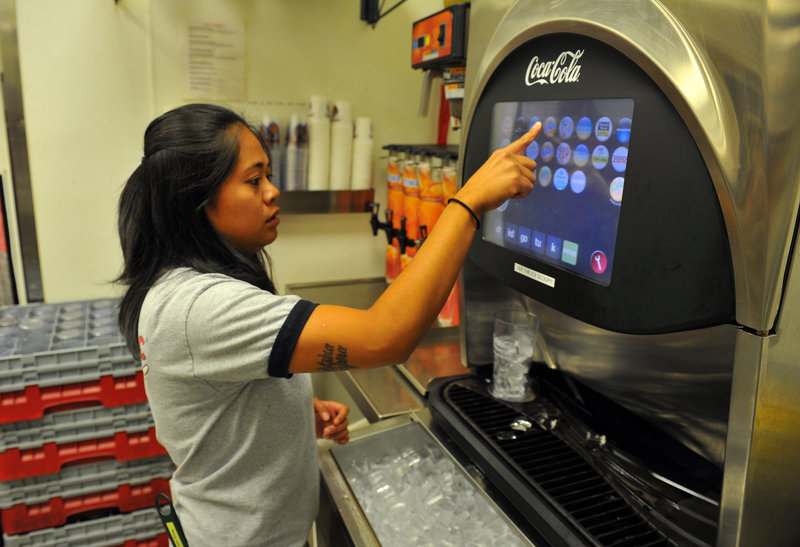ATLANTA – Coca-Cola’s Freestyle fountain dispenser, which the company launched three years ago, is one of its biggest innovations in years, and many say the machine is a potential game-changer in the ultra-competitive beverage industry.
Dispensing combinations of more than 120 of the company’s brands from a touch screen — including Coke Zero, Fanta, Pibb and Dasani — the machines are being credited with driving double-digit sales for many of the restaurant chains that have adopted it.
Despite some anxiety about the reliability of computers and the added costs that come with more choices, the device has been so successful that competitors may soon come up with their own versions.
“It’s giving consumers the ultimate option — beverage choices that they can customize themselves,” said Joe Pawlak, vice president of Technomic, a Chicago-based food research consultant. “It’s also driving up food sales by luring in customers who are there just to use the machines.”
But it comes at a cost. Traditionally, retailers are given the fountain equipment for free or through some other arrangement, including leases or as a loan from a bottler. For Freestyle, retailers pay a program fee that covers the equipment, installation, service, upgrades and the wireless data connection. Coca-Cola declined to disclose the fee amount.
The concentrate that makes the drinks also is more expensive than it is for traditional devices. Operators of several of the chains that offer the machines said they raised drink prices on average by 10 cents to cover costs.
Because of the increased choices, retailers also are buying more concentrate to accommodate consumers who are trying — and sometimes dumping down the drain — the expansive drink selection.
Technology is also a concern, at least at first, for some retailers. The machines are computer-operated, making them susceptible to freezing, crashing or breaking down. Unlike traditional fountain dispensers, which use air pressure to send the soda from plastic bags when customers squeeze or push a lever, a computer sends the drink choice to cartridges stored in the machine.
Coca-Cola said that so far, it has not seen a lot of problems, and that the company has a team of technicians at the ready to fix whatever glitches occur. Many of the problems also can be resolved via updates sent to the machines directly from Coca-Cola, which is connected to all the devices.
There’s also a learning curve for customers wishing to use Freestyle. Consumers generally need guidance when the machine is first installed, which can create long lines as they become acquainted with the choices, restaurant operators say.
“What often happens is people watch each other and learn how to use it,” said Don Fox, the CEO of Firehouse Subs. “But after the first 60 days it works itself out.”
Coca-Cola says 97 percent of customers that have tried Freestyle continue to use it or have added more machines. About 7,200 machines are in operation in 4,500 locations, including Burger King, said Susan Stribling, a Coca-Cola spokeswoman.
Freestyle’s success is critical for Atlanta-based Coca-Cola. North American sales of its carbonated beverages — its biggest moneymaker — have been declining since their peak in the 1990s. Teas, water, juices and energy drinks have picked up some of the slack, but they don’t have the same volume as the company’s soft drinks.
The machines, which also are in movie theaters and corporate cafeterias, could lure back customers the company has lost or introduce them and others to drinks not available on the market because of limited space on shelves at grocery and convenience stores.
Copy the Story Link
Send questions/comments to the editors.



Success. Please wait for the page to reload. If the page does not reload within 5 seconds, please refresh the page.
Enter your email and password to access comments.
Hi, to comment on stories you must . This profile is in addition to your subscription and website login.
Already have a commenting profile? .
Invalid username/password.
Please check your email to confirm and complete your registration.
Only subscribers are eligible to post comments. Please subscribe or login first for digital access. Here’s why.
Use the form below to reset your password. When you've submitted your account email, we will send an email with a reset code.